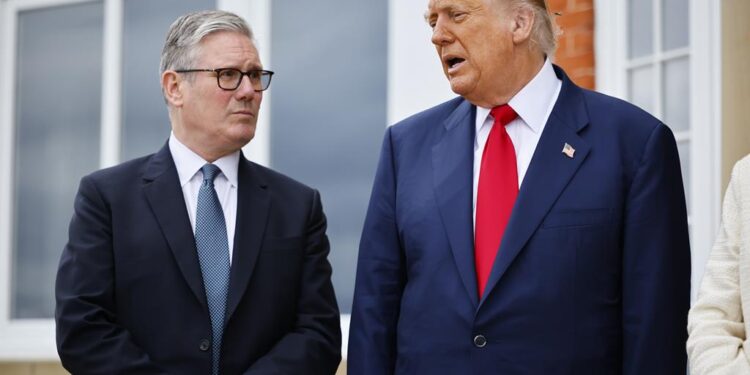Donald Trump announced on Monday, July 28, that the United States was going to establish food distribution centers in Gaza, evoking a “real famine” in the Palestinian territory. A spectacular declaration, but which raises an essential question: should we really believe it?
A sudden promise, without details
Since Scotland, where he met British Prime Minister Keir Starmer, Trump said that these centers would be “freely accessible, without fences or restrictions”. He says he was deeply touched by images of hungry children. “Some people experience real famine,” he said.
But the announcement remains vague. No calendar has been given. No logistics or partner details have been mentioned. Coordination with Israel, however essential, has not been mentioned either.
A field undermined by war and famine
On Sunday, Israel announced a “tactical break” in certain areas of Gaza. The objective: to allow the passage of humanitarian aid. That same day, 120 trucks from Egypt were able to enter the enclave. The aid was distributed by the UN and other organizations.
Despite this partial Truce, the Israeli strikes continue elsewhere. At least 54 Palestinians were killed on Sunday, according to the Civil Defense. In Al-Mawasi, a shot caused the death of five people, including a pregnant woman. The baby was saved by Cesarean.
A pressure under pressure, blurred intentions
Can Trump really keep his promise? The former president has often made spectacular announcements without follow -up. During his previous mandate, he had already promised peace in the Middle East, without succeeding.
Egyptian president Abdel Fattah al-Sissi called him to intervene, believing that he could “put an end to war”. However, despite the efforts of the United States, Egypt and Qatar, mediation remains at a standstill. The ceasefire, which Trump judges “possible”, always seems out of reach.
Two Israeli NGOs, B’tselem and Physicians for Human Rights, accuse their government of “genocide” in Gaza, which the executive of Netanyahu firmly rejects.
The UN points out that 500 trucks per day are necessary for Gaza, but thousands remain blocked in Jordan and Egypt, for lack of authorization from Israel.
A word that engages or a simple posture?
Donald Trump says he wants to “feed the children” from Gaza. The intention is laudable, but the means remain vague. Can the American president really get around the Israeli blockade? Can it organize the implementation of aid centers without concrete negotiations on the ground? And above all, does this announcement mark the beginning of a real humanitarian involvement or is it, once again, of a communication blow?
Faced with the scale of the crisis, the inhabitants of Gaza await acts, not declarations. And in the absence of tangible evidence, Trump’s promise remains, for the moment, a suspended word.








